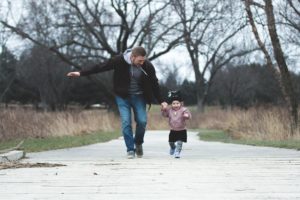Looking for ways to minimize taxes on RMDs? For wealthy retirees, mandatory distributions from retirement accounts can cause taxes to increase sharply. As with all financial planning, to get the best results you’ll want to start early. For workers with $1M+ in tax-deferred retirement accounts and other sources of income, these mandatory taxable distributions may be problematic without a tax strategy for RMDs. Here are three strategies to minimize taxes on required minimum distributions from retirement accounts.
Do you need a strategy to minimize taxes on required minimum distributions?
Here are 4 ways RMDs can increase your taxes without additional planning
- Ordinary Income. RMDs are includable in the taxpayer’s ordinary taxable income. So the taxable portion of the disbursement incurs a higher tax rate than capital gains in a brokerage account. It can also push some retirees into a higher marginal tax bracket.
- Medicare Surtax. Required minimum distributions also increase the taxpayer’s modified adjusted gross income, or MAGI, which could trigger the 3.8% Medicare surtax. The surtax applies to the lesser of net investment income or MAGI in excess of $200,000 for individuals or $250,000 for married couples filing jointly.
- Taxing Social Security Benefits. Even modest withdrawals from a retirement account can cause Social Security benefits to become taxable, up to 85% for single filers with income above $34,000 annually or married couples with income above $44,000
- Medicare Premiums. Medicare Part B and D premiums are also calculated using a taxpayer’s MAGI, so large RMDs can cause sharp increases to your Medicare costs, with the wealthiest taxpayers shouldering up to 80% of the cost
Required minimum distribution basics
Calculating RMDs
RMDs are calculated using the IRS’ Uniform Lifetime Table. Required minimum distributions are calculated based on your age, corresponding life expectancy factor, and the account balance(s) as of December 31 of the prior year for all retirement plans and IRAs (except Roth IRAs). Divide this sum by the life expectancy factor listed on the table.
When do you have to start RMDs from retirement accounts?
The Secure Act, which was passed at the end of 2019, changed the age some retirees will need to begin RMDs. Individuals born on or before June 30th, 1949 will need to take their first RMD at age 70 1/2. Investors born on or after July 1st, 1949 begin RMDs starting at age 72.
3 Strategies to Minimize Taxes on Required Minimum Distributions
1. Reducing tax on RMDs by utilizing different account types before retirement
There is a lot to be said for the benefits of tax-deferred growth on investments. However, for investors who are able, it may be wise to diversify retirement assets. It is worth noting that not everyone will feel negative tax consequences of required minimum distributions. Depending on your tax projections for the future, it may not make sense to forgo tax-deferred growth.
There are three main investment categories for retirement assets: pre-tax, taxable, and tax-free
Pre-tax accounts
Pre-tax retirement accounts are the most common. Traditional IRAs and 401(k) plans are examples. Investors deduct contributions from their taxable income but will pay regular income tax when they withdraw funds in retirement through required distributions or voluntary withdrawals. When you save money before tax, you’ll need to pay tax when you take it out later.
Tax planning tips:
- Try to avoid non-deductible contributions to an IRA as it will increase your pool of RMD assets
- A deferred compensation plan may be tempting, but it could significantly increase your taxes in retirement
- If you have a big pension, inherited IRA, or sizable pool of pre-tax retirement assets, consider whether you should stop maxing out 401(k) contributions
Taxable accounts
Taxable investment accounts like a brokerage account will require you to pay taxes on dividends, interest and capital gains on realized investment gains annually. There are benefits of saving for retirement outside of retirement accounts. First, you can use the funds at any time in your life for any purpose. Second, there are no withdrawal requirements, and third, tax planning opportunities include using efficient investments and targeting long-term gains.
Tax planning tips:
- A brokerage account helps retirees control their tax situation. Instead of 100% of the withdrawal as regular income, funds from a brokerage account can qualify for more favorable long-term capital gains rates
- A taxable account can receive favorable tax treatment when left as an inheritance called a step-up in cost basis
- This is another source of income before RMD age or after, if you need more money to pay expenses than your annual required minimum distribution
Tax-free accounts
Tax-free accounts like a Roth IRA and Roth 401(k) are unique in that an investor will make contributions with after-tax money, but the account can then grow tax-free if held for at least five years. Distributions in retirement are not taxable, and there are no RMDs on Roth IRAs. Unless you roll your Roth 401(k) to a Roth IRA, you will be required to take RMDs.
Tax planning tips:
- Convert pre-tax money to tax-free Roth. Roth IRAs have income limits which prevent many investors from contributing. However, individuals are allowed to make one Roth IRA conversion from a Traditional IRA or 401(k) annually, regardless of earnings. The catch is that the entire amount will become taxable income that year, which may bump you into a higher tax bracket. If you are considering a taxable or tax-free strategy to diversify your retirement savings, make sure you have a strategy in place for ongoing regular contributions that will make a meaningful impact on your overall situation.
- Consider the pros and cons of a mega backdoor Roth strategy if offered in your 401(k) plan
2. Can I give my RMD to charity?
Yes! It may seem surprising, but sometimes wealthy retirees save too much for retirement. At least, more than they’ll need.
Many retirees don’t realize they can donate all, or a portion of, their required minimum distribution (RMD) directly to charity, through a qualified charitable distribution. A QCD or qualified charitable distribution can be made directly from your IRA starting at age 70 1/2. Even if you don’t have to start required minimum distributions until age 72, you can still begin donating money from your IRA to charity at 70 1/2.
Each retirement account owner can donate up to $100,000 each year using a qualified charitable distribution, even if it exceeds your RMD. There’s a 2-year lookback for Medicare premiums, meaning 2022 premiums are calculated using the 2020 tax return. Donations must also go directly to the qualified public charity. Careful tax and financial planning is advised when considering a planned giving strategy.
3. Minimize taxes on required minimum distributions through dynamic withdrawals in retirement
When you retire, depending on how you’ve saved for retirement, you should have a few options to meet your income needs. Even if required minimum distributions haven’t started yet, it doesn’t mean you should wait to tap retirement accounts.
Depending on your overall pool of investable assets, pension, Social Security income, and other revenue sources, you should consider customizing a tax-efficient withdrawal strategy. Retirement planning projections are a great start, but tax brackets change and so too will your account size which makes income in retirement an ongoing effort to minimize tax.
For the best outcome, you’ll want to consider working with a fee-only financial advisor to support your goals.
Final word on retirement tax planning
The best withdrawal order depends on your tax and income situation each year. As a general rule of thumb, retirees currently in a lower marginal tax bracket may want to draw down tax-deferred accounts first. Those still working or in higher tax brackets could benefit from taking funds from tax-free or taxable accounts. If passing along a legacy to heirs is a primary goal, using taxable assets last may be a good strategy.
When developing a tax planning strategy, it’s best to stay focused on the big picture. While reducing taxable income is an important part to your wealth strategy, don’t let the tail wag the dog. In other words, make sure taxes are part of your plan – not driving it. Instead of spending time speculating what tax rates will become, develop your retirement plan around your income and legacy goals.
Since 1987, Darrow Wealth Management has been working to help pre-retirees achieve their wealth goals. To learn more about our wealth management program, please contact us today.











